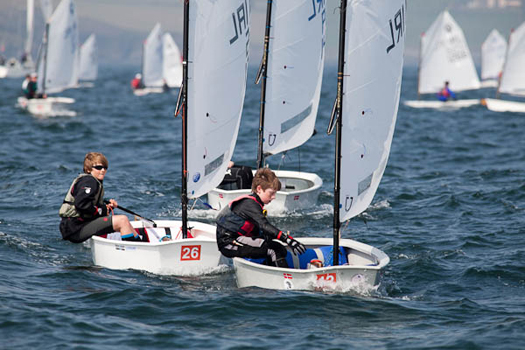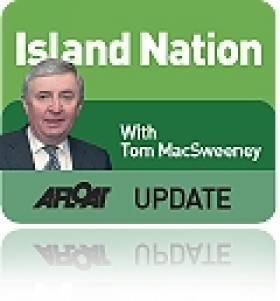Displaying items by tag: Optimist dinghy
Young Optimists Head Back to the Water
That is the message from Monkstown Bay Sailing Club in Cork Harbour where the season for this dinghy, specially-built for the youngest sailors, begins this Sunday with training sessions that will run until the middle of June. The club introduced the Optimist to its ranks only in the past few years, encouraging more families to take an interest in sailing.
The Optimist is a small, single-handed sailing dinghy intended for use by children up to the age of 15. Nowadays boats are usually made of fibreglass, though those of earlier vintage were of wood, some of which are still sailed. It is one of the most popular sailing dinghies in the world. Over 130,000 boats are registered with the class. Many more were built but not registered. The class is recognised by the International Sailing Federation.
The boat was designed from an American soap-box derby 'car'!
Clark Mills, a boat builder and designer from Clearwater in Florida was the man who drew up the design in 1947, responding to a request from a local businessmen's association known as the 'Optimists.' They wanted a marine equivalent of the "soap-box" for children to sail and Clark dubbed it the "pram" dinghy.
"I think I'm the best designer in the United States," he said. "I'm damn good. I've got the splinters and the backache to prove it. I don't mind taking the blame for designing the pram, but I was just one of many, many people who got it rolling."
Twenty-six boats were built in the first year, mostly by Clark himself and, before building started in Europe in 1954, there were almost 1,500 Optimists in the USA.
His philosophy about a boat was: "It's just a gleaming beautiful creation.
When you pull the sail up on a boat, you've got a little bit of really something God-given. There's nothing else like it."
The MBSC optimist open sessions will run for nine weeks from this Sunday until June 19, excluding Easter Sunday. They are open to children between the ages of 7 and 13 years, are "fun focused" and have proven to be a gentle way for children to get involved in sailing.
Optimist league racing is underway on Saturdays at the RCYC in Crosshaven where Stephen O'Shaughnessy is Class Captain. There is strong parental involvement needed and encouraged in the sailing of Optimists. At Crosshaven during this league the less-experienced children who are learning to race are allowed to be coached and encouraged while racing by those parents who are manning the safety boats.

Oppy sailors competing off Kinsale. More Oppy trials photos from Bob Bateman
"The key objective is to show support where feasible without directly interfering with any race," according to the club. "The success or otherwise of this will be reviewed each month."
At the higher level of "oppi" sailing as it is colloquially known, training sessions for the national Optimist team began in Kinsale last weekend where fifty of the leading youngsters in the class competed for team places. Eight races were sailed over three days in mainly light airs with conditions described as "challenging and tricky." The next sessions will be held on the May holiday weekend at the Royal St.George club in Dun Laoghaire.
More youth sailing news





























































